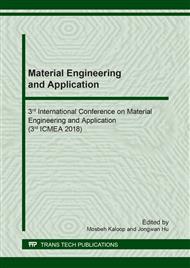p.170
p.176
p.182
p.187
p.195
p.201
p.208
p.216
p.221
Transfer Die Technology Application for Efficiency Auto Part Production
Abstract:
Transfer die technology application for efficiency auto part production analysis of feedermechanism and efficiency of highly precision die design of transfer dies were applied by the feedermechanism system and work feed by pneumatic suction feed mechanism for transfer the workpieceto next station. This workpiece is panel sill and it’s a galvanized grade JAC 270C-35 and 1.4 mm ofthickness. After experimented with a finite element, it was found that the work piece able tostamping without causing damage to the workpiece. Then it’s taken into the die design processfollow by step. Therefore, participation start to create a die as highly precisions progressive die andexamined by stamping workpiece according to the customer requirement. It had found out thatwhen we first’s try out the result are similar valid to the design by made tiny adjustment over thedie. The inspection results of workpiece, according to the drawing design. Obviously, the size andborder of workpiece inspection was acceptable and in order to the result. It able conclude out. As aresult, the company can reduce time, reduce cost and mitigate the risk of error in the actual seriesproduction dies.
Info:
Periodical:
Pages:
201-207
Citation:
Online since:
November 2018
Authors:
Price:
Сopyright:
© 2018 Trans Tech Publications Ltd. All Rights Reserved
Share:
Citation:


